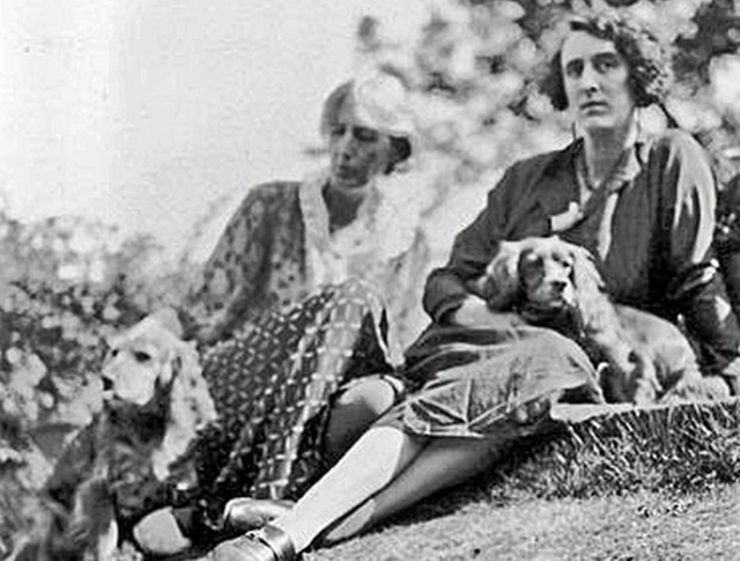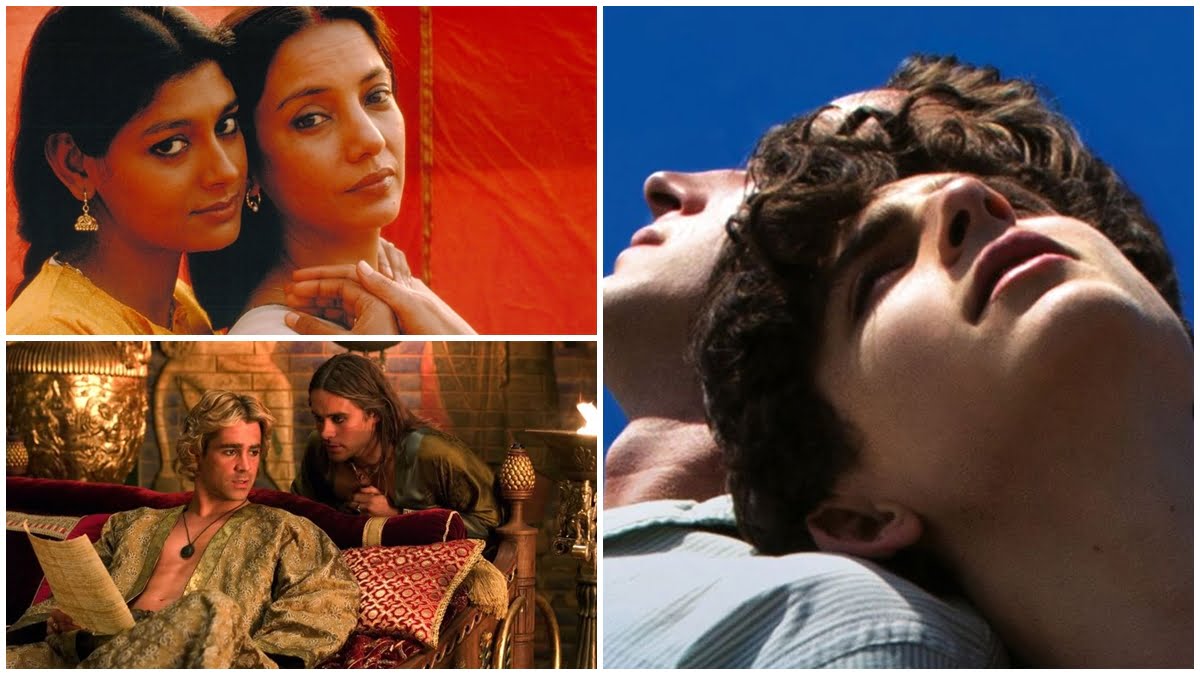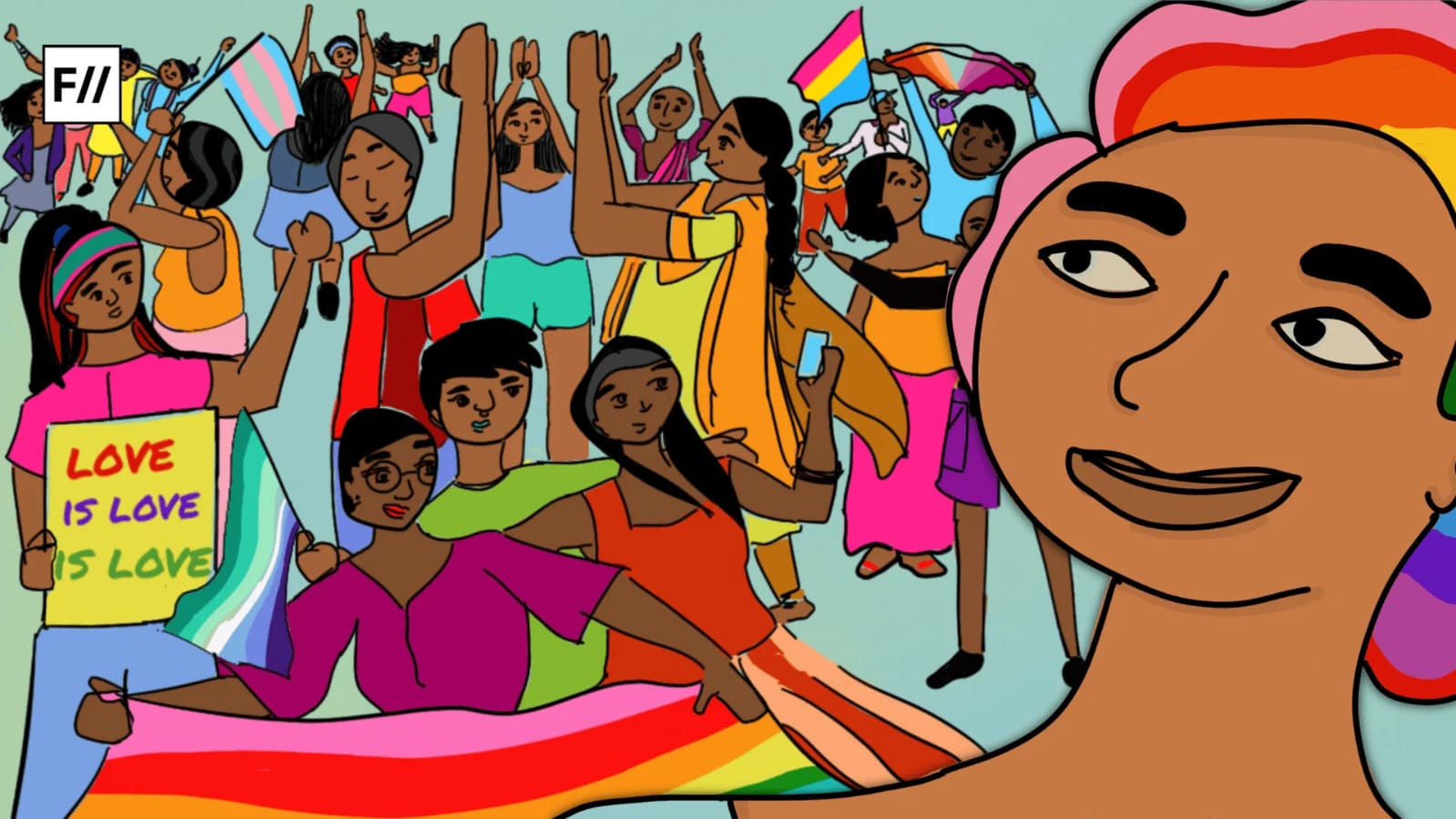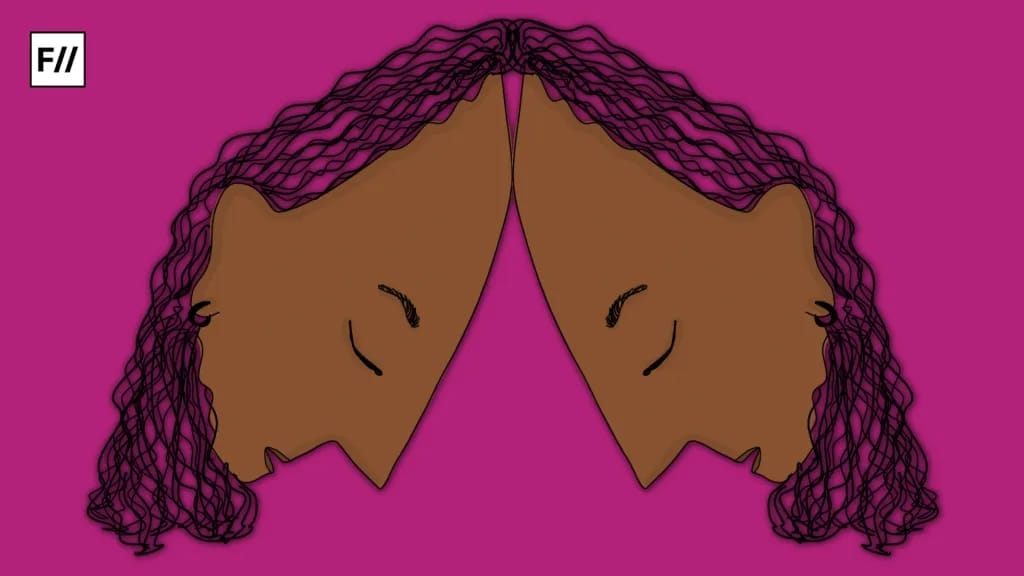“There is no word in our language to describe what we are or what we feel for each other,” tells Sita to her lover Radha in Deepa Mehta’s 1996 film Fire. The experiences of the queer community have always been sidelined due to the utter absence of vocabulary owing to the phallogocentric and consequently heterosexist nature of ‘language’. This hegemony of heteronormative vocabulary has gained strength throughout lingual evolution.

“There is no word in our language to describe what we are or what we feel for each other,” tells Sita to her lover Radha in Deepa Mehta’s 1996 film Fire. The experiences of the queer community have always been sidelined due to the utter absence of vocabulary owing to the phallogocentric and consequently heterosexist nature of ‘language’. This hegemony of heteronormative vocabulary has gained strength throughout lingual evolution.
Robert Frost, in his 1922 poem “Stopping by Woods on a Snowy Evening”, abided by the earliest recorded meaning of the word ‘queer’ by OED which defined the term as ‘strange, odd, peculiar, eccentric’: “My little horse must think it queer // To stop without a farmhouse near.” Queer studies branched out of the feminist movement to emerge as an independent field only in the early 1990s and have rapidly increased momentum ever since. Promod K. Nayar in his essay, “Queer Cultural Studies: Notes Towards a Framework”, defines Queer Cultural Studies as “an attempt to redefine identities and carve out a cultural/political space within the dominant heterosexual paradigm, to simply stop being invisible or the other of heterosexuality.” (03). Thus, queer studies, among other efforts, attempts to focus on the emancipation of queer identities and argue against homosexuality being the other to heterosexuality.
Also read: Why Queerplatonic Relationships Are Important For Queer People
One can notice the prioritisation of the term ‘sexuality’ in concepts of queer studies and queer theory. Professor Paul Fry asserts that queer theory attempts to unmask the meaning of the much-used term sexuality. In his analysis of Michel Foucault’s History of Sexuality, Fry points out that Foucault discusses “deployment of sexuality”, a concept which creates a space for both homosexuality and birth control as anti-thesis to the reproduction, conflicting with the idea of “deployment of alliance,” another concept which entails family as a fundamental unit created by reproduction (21). Foucault, while using the concept of sexuality and locating it in discourses of power and knowledge, does not define the term categorically.
Similarly, Judith Butler in her extensive work on non-het sexualities and gender as a performance, while not defining ‘sexuality’ as a term, emphasizes the idea of “prohibition against homosexuality” (Butler 5). She talks about the way in which, even while calling out homosexuality, people talk about male homosexuality, ignoring the existence of lesbianism. She further uses Derridean philosophy which is developed from Levi-Strauss’s idea of binary opposition and comments that heterosexuality does not precede homosexuality, both are mutually dependent, defined in terms of each other, therefore, none of them can be called a deviation of the original, framing the other as unnatural.
While there were attempts to prove queer sexualities as natural, the conservative society relegated them to the margins, calling such people diseased and tried to cure them through the administration of medicines, subjection to electroshock therapies and forced redeployment into heterosexual sex. The theme of homosexuality, transsexuality, and queerness in literature has been constant, albeit sporadic. From the existence of a transgender character, Shikhandi, in Mahabharata, claims of a homosexual relationship between Alexander and Hephaestion by historians such as James Davidson, love affair between Achilles and Patroclus from The Iliad in renditions such as Cassandra by Christa Wolf and Song of Achilles by Madeline Miller, writings of Oscar Wilde to modern works like Shyam Selvadurai’s Funny Boy and Patricia Highsmith’s The Price of Salt, give an insight into homosexual relationships and existence of characters belonging to the community.

“Look here Vita — throw over your man, and we’ll go to Hampton Court and dine on the river together and walk in the garden in the moonlight and come home late and have a bottle of wine and get tipsy, and I’ll tell you all the things I have in my head, millions, myriads — They won’t stir by day, only by dark on the river. Think of that. Throw over your man, I say, and come.”
These lines by Virginia Woolf to Vita Sackville-West, a renowned British poet, and journalist, in a letter written in 1927 speaks of their passionate relationship. It is believed that not only Woolf’s gender breaking work, Orlando — considered a trailblazer in queer literature — was a result of her love affair with Sackville-West but also that the protagonist was a fictionalisation of Vita.

Also read: Montero & Take Me To Church: The Pride And The Peripeteia Of Paradise
Kaustav Bakshi and Rohit K. Dasgupta in their essay “Reading Queerly” describes the way in which Queer Cultural Studies re-reads the popular works from the standpoint of queer theory:
“Since the popularisation of queer theory within the academia, scholars have often revisited canonical texts to discover in them undercurrents of unspoken desire, resistances to normativity, rupturing of binaries and ambiguous sexualities: Geoffrey Chaucer, William Shakespeare, Mary Shelley and Thomas Gray to Bankim Chandra Chattopadhyay, Rabindranath Tagore, Harper Lee or Saadat Hasan Manto, just to name a few, have all been queerly read. (106)
It is not only in textual works but in cinema as well that the idea of queerness has been explored. Though gay characters have been present in cinema for a long time, they are often boxed in the stereotype of being feminine and are often “used” to create comic relief, especially in Indian cinema. Bakshi and Dasgupta in a subsequent essay “Seeing Queerly” talk about two different trajectories in the West in queer cinema. First, the trajectory which tries to create a space for homosexual characters in mainstream cinema. Second, the trajectory which deems cinema as not a space positive enough for representation or “acceptability”:
“The first trajectory follows a recuperative logic. Contrasting the negative/limiting portrayal of homosexuals in mainstream films, it tries to revive this image and incorporate it within mainstream cinema. Most of the films along with this trajectory attempt to create an alternate space for the queer within the mainstream genre. Many of them are strongly invested in history, attempting thus to intervene and ‘queerise’ certain moments in history or to claim certain figures as queer heroes/martyrs. The other trajectory, however, rejects altogether the representative possibilities of the mainstream genre, rejecting cinema as either a reassuring space of positivity or a potential route to win the acceptance of wider audiences.” (127)


Some of the most famous and discussed films in this genre of queer cinema include The Boys in the Band (1970), Un chant d’Amour (1972), Pink Flamingos (1972), The Birdcage (1996), Boys Don’t Cry (1999), Carol (2015), Moonlight (2016) and Call Me by Your Name (2017). While some of these movies were originally written for cinema, a few have been adapted from published texts to the big screen.
References
- “Linda Hutcheon, A Theory of Adaptation (2006)”. Fandom. https://adaptations.fandom.com/wiki/Linda_Hutcheon,_A_Theory_of_Adaptation_(2006)
- “Reviewing The Film Version Of Brokeback Mountain Film Studies Essay.” Ukessays. 5-12-16. https://www.ukessays.com/essays/film-studies/reviewing-the-film-version-of-brokeback-mountain-film-studies-essay.php
- Bakshi, Kaustav. “Contemporary Issues in Queer Studies 2: The Rural Queer, Moving Beyond the Metropolis”, Queer Studies: Text, Context and Praxis. Rohit K. Dasgupta. Hyderabad: Orient BlackSwan, 2019,74-89.
- Bakshi, Kaustav. “Reading Queerly”, Queer Studies: Text, Context and Praxis. Rohit K. Dasgupta. Hyderabad: Orient BlackSwan, 2019, 106-122.
- Bakshi, Kaustav. “Seeing Queerly”, Queer Studies: Text, Context and Praxis. Rohit K. Dasgupta. Hyderabad: Orient BlackSwan, 2019, 123-133.
- Baugh, Lloyd. “The Search for Meaning, the Struggle to Love: Ang Lee’s Film ‘Brokeback Mountain.’” Gregorianum, Vol. 90, No. 3 (2009), pp. 533-570. JSTOR. https://www.jstor.org/stable/23582169
- Butler, Judith. Gender Trouble. New York: Routledge, 2007.
- Foucault, Michel. The History of Sexuality. London: Penguin, 1998.
- Handley, William R., The Brokeback Book: From Story to Cultural Phenomenon. London: University of Nebraska Press, 2011.
- Hart, Kylo-Patrick R. “Retrograde Storytelling or Queer Cinematic Triumph? the (Not So) Groundbreaking Qualities of the Film Brokeback Mountain.” Intertexts. Vol. 10, No. 2. Questia.
- Mehta, Deepa, Fire. Shabana Azmi, Nandita Das. Kaleidoscope Entertainment, 1996.
- Nayar, Promod K. “Queer Cultural Studies: Notes Towards a Framework”, 2017.
- Proulx, Annie. “Brokeback Mountain”, London: Deadline Ltd., 1999.
- Yale University. “23. Queer Theory and Gender Performativity.” YouTube, 1-9-2009. https://www.youtube.com/watch?v=7bkFlJfxyF0
Purusharth is a literature student at University of Delhi. He is interested in Postmodern literature and is an avid cricket fan. He can be found on Instagram and Facebook.





At least cite my name properly…:) Also, the article is dated, am sorry to say!Was the intention of the article to furnish information alone? Then, I have nothing to say, given it is written by a student. The only heart-warming bit is that genZ is actually reading up queer histories and keeping a tab on queer cultural expression s.
Thank you for reading, sir. The idea, as you rightly pointed out, was to provide information on the historical background to the vocabulary to describe queerness. While our generation is experiencing and providing new voice to the queer movement, the works such as yours lay an important background for us to carry forward. Thank you.